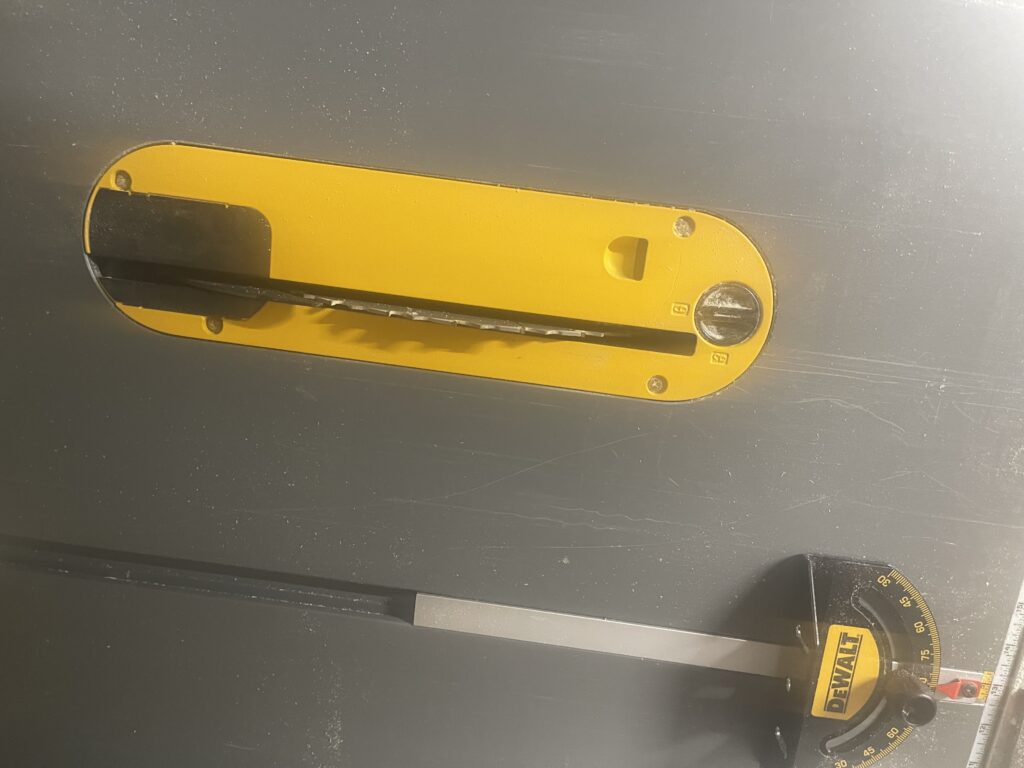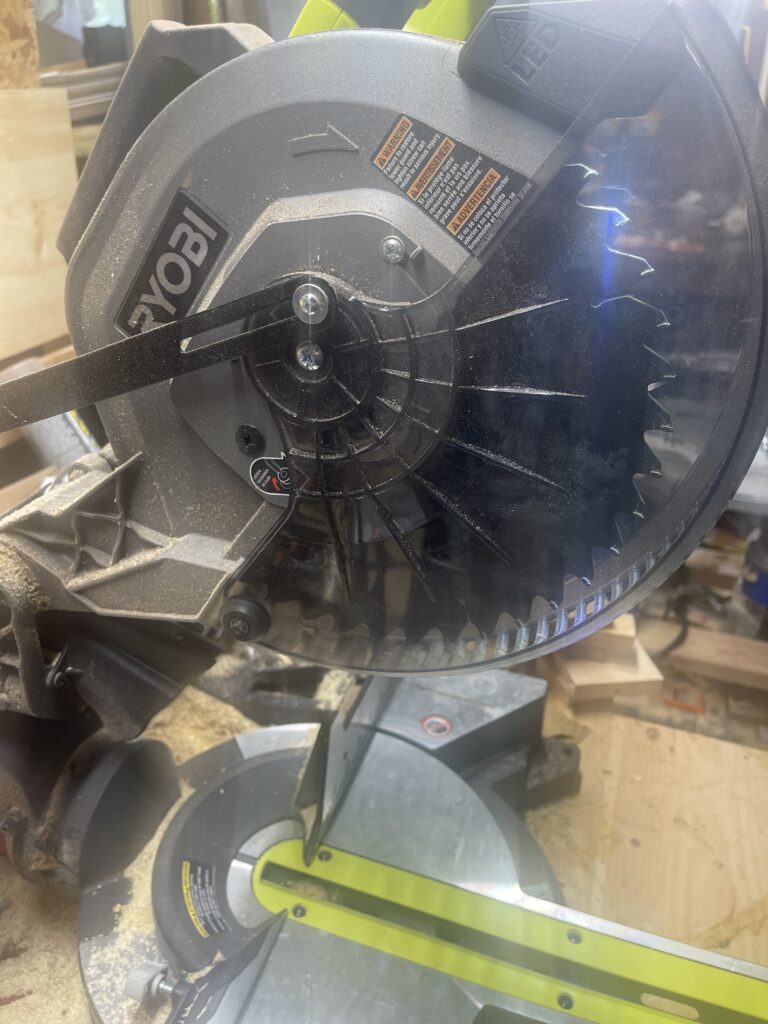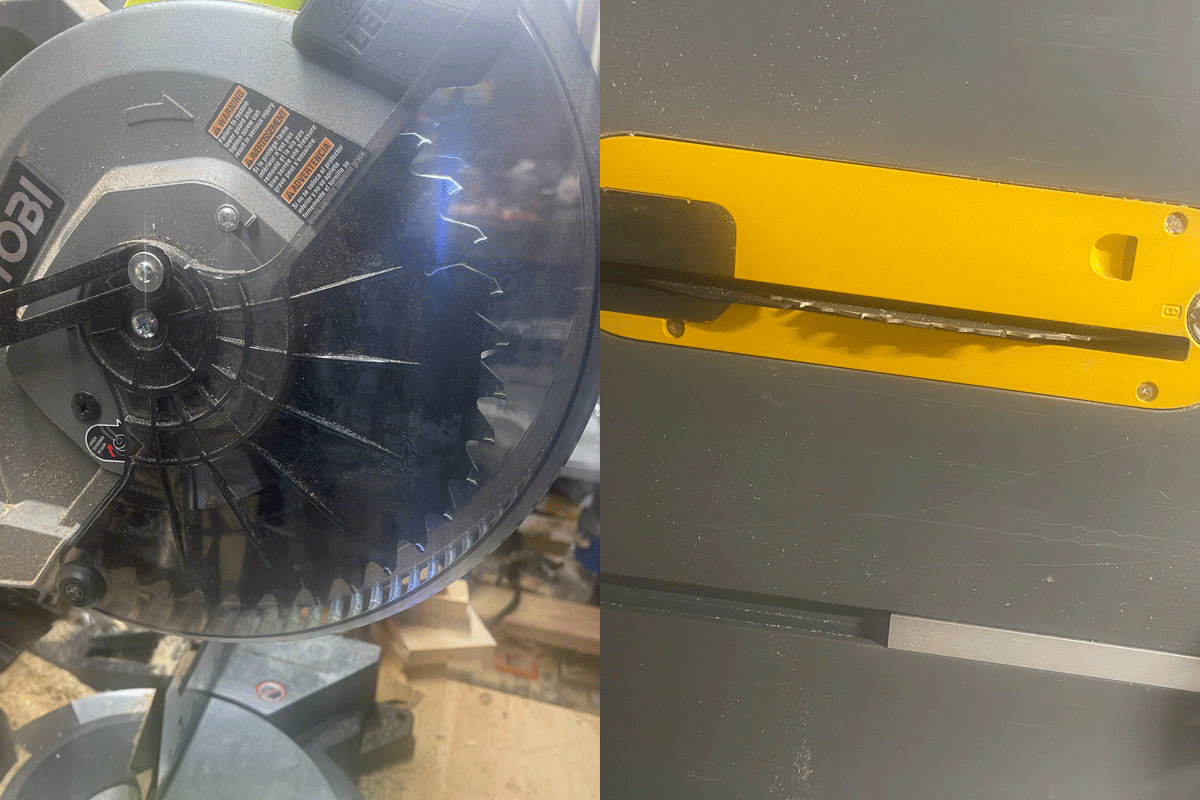Miter Saw vs Table Saw: Picking the 1 you need now
When it comes to the miter saw vs table saw, there is one clear winner: go with the one you need. Here’s how to decide.
Who this article is for…
- Complete newbies to wood working who want to build their shop.
- More advanced wood workers who have never had room for or always relied on other options who are looking to update their shop.
- DIYers who have questions about what might work best for them.
Miter saw vs table saw is a debate worth considering. Both are good options and have their place in a well-rounded workshop for both woodworkers and DIYers.
Many enthusiasts will tell you, “get both!” And while you’ll probably love having them, the harsh reality is not everyone has the space or money in their budget to get two saws at once.
So if you find yourself deciding between a miter saw vs table saw and have limited money, space, or both, then you really need to pick just one.
While some may disagree and there are reasons to pick the other, my advice is get the table saw instead of the miter saw.
While I can assure you having both is amazing, you will probably regret (as I did) getting a miter saw first.
Yes, there are exceptions to this rule, which I will explain below, but for the most part, the miter saw cannot match the versatility of the table saw, though you will be paying for the extra features both in money and space.
What is a table saw and miter saw?
You are probably really lost if you need much of an explanation on what these saws actually are, but in case you need a refresher before going on or are really brand new to tools, here’s what each one does.
Table saw

A table saw, as the name heavily implies, is a saw attached to a table. Think of it like a more heavy duty version of the handheld circular saw that’s flipped belly up and attached to a flat table.
With a circular saw, you push the saw through your wood to make your cut, but with a table saw, you push your wood through the saw to make the cut. Not everyone agrees, but I find this gives you more stability and more precise cuts compared to the circular saw.
The table saw allows you to make several different types of cuts, including:
- cross cut – a cut that goes across the grain of the wood
- rip cut – a cut that follows the grain of the wood, often on a long piece of wood
- dado cut – a wider cut that creates a groove in the wood
- rabbet cut – similar to a dado cut, it makes notches in edges of wood
- miter cut – a cut that creates an angle while the saw blade remains at a 90 degree angle
- bevel cut – a cut that creates an angle by tilting the blade itself
In other words, when it comes to the amount of cuts it can do, almost no other saw can match it’s diverse range of cuts.
Miter saw

The miter saw is another stationary power saw that uses either a single chopping motion or a chopping and sliding motion to make a cut. People often refer to miter saws as “chop saws” for this reason, and, really, it does help chop long pieces of wood into shorter pieces.
And like a table saw, it can make several cuts, including:
- cross cut – a cut that goes across the grain of the wood
- miter cut – a cut that creates an angle while the saw blade remains at a 90 degree angle
- bevel cut – a cut that creates an angle by tilting the blade itself
- compound cut – a cut made at both a miter angle and bevel angle
Most woodworkers use it for cutting trim, molding, and other general applications that require a straight or mitered cut.
It’s miter cuts are also more accurate than a table saws, but it cannot use a dado blade or make a long rip cut, which means if you cut a lot of plywood or other long, large boards, it loses the battle between a miter saw vs table saw.
Side by side comparison
When deciding between a miter saw vs table saw, it may be helpful to see a side by side comparison of many key features each saw offers. Here’s a simple breakdown:
| Feature | Miter Saw | Table Saw |
| Sizes | common sizes include 8″, 10″, and 12″ | common sizes include 8.25″ and 10″ |
| Cuts | miter cuts, crosscuts, bevel cuts, and compound cuts | rip cuts, cross cuts, miter cuts, beveled cuts, rabbet cuts, and dado cuts |
| Cutting depth | will vary on blade size, sliding feature, and angle but are generally thicker than table saw depths; | 8.25″: 2.5 inches for a straight cut; 10″: 3.5 inches for a straight cut |
| Power source | battery or cord | battery or cord |
| Fence | no | yes most saws have a fence to guide cuts |
| Stand included | no, though universal stands are available for nearly any model | yes, most saws, except some jobsite models, come with stands built in or as part of a bundle |
| Cost | around $100 dollars for a basic model to over $800 dollars for a professional model | around $300 for a basic model to well over $3,000 for a professional model |
| Safety | relatively safe when used properly | arguably the most dangerous tool in the average workshop |
| PPE recommended | goggles/safety glasses, ear protection, mask or filtration system for dust | goggles/safety glasses, ear protection, mask or filtration system for dust |
Which to choose: miter saw vs table saw
Neither a miter saw nor table saw will necessarily disappoint, no matter which you decide to go with. They can both help you make quick, accurate cuts that will save you time and energy.
They also both come in more portable, jobsite sizes, which means most shops should be able to accommodate either type of saw. You can also get either in battery operated or traditional corded models to suite your preference.
That said, though, unless you have a good reason to get a battery operated saw, I would recommend getting the corded model of either.
With a cord, you will never run out of power (assuming you pay your electric bill and don’t blow of fuse of course). This means they provide consistent cutting without slowing down or randomly stopping.
When it comes to choosing between a miter saw vs table saw, I would recommend going with the table saw over the miter saw. The reasoning comes down to a few simple differences:
- can make rip or dado cuts
- makes miter or bevel cuts, though they are not as precise
- majority of tables come with a built in fence, which allows you to easily make the same length cut over and over without having to create your own stop
But that’s not to say that a miter saw might not better suit your needs. If you work with long pieces that need to be cut frequently or that need precise miter cuts, the miter saw will likely work better for your needs.
The miter saw can make miter cuts that are a bit more precise than the table saw, which makes it handy for trim and other pieces that need to fit together snugly.
You’ll also appreciate the cheaper overall price tag, and you may find that the space it saves is worth the sacrifice of not being able to do rip cuts. After all, you can make a rip cut with a handheld circular saw and dados with a router.
For the kids…
If you have kids at home, you may be interested in general safety issues when comparing the miter saw vs table saw. Or maybe you aren’t too concerned about safety, but do want something that is easy to use.
Here are a couple of things to keep in mind when it comes to safety and ease of use when picking either a miter saw or table saw.
| Miter Saw | Table Saw | |
| Safety | Generally safe and most modern types come with build in safety features, such as safety switches. | Many people consider the table saw the most dangerous saw in the shop due to the potential for errors, including losing fingers and creating projectiles. Most come standard with several built in safety features including safety switches, locks, fully retractable blade when not in use, and others. |
| Ease of use | Easy to use and line up cuts on a draw line; some include lasers to show exactly where the blade will enter or LED lighting. | Generally easy to use, but a table saw can take some getting used to with how to push the wood through the blade, using a push bar, and getting the cut squared properly. |
My kids are a bit on the young side, but I would feel comfortable teaching my 7 (almost 8) year old how to use either saw. Of course, when working with power saws, you will want to have personal safety equipment, which should include a minimum of:
- safety glasses or goggles
- respiratory or mask for saw dust and/or well ventilated area
- ear plugs or ear muffs
- push bar (for the table saw)
- proper support for material
You will also want to make sure your children tie up long hair when using either a miter saw or table saw, remove jewelry, and only wear skin tight gloves.
Take away
A table saw is my personal pick of which to go with first or for those who have limited space and can only go with one. It offers a more extensive list of cuts than the miter saw, offers overall greater versatility, and can make accurate long cuts.
But the versatility of a table saw comes with a heftier price tag for a decent model. It also typically takes up more space than a miter saw.
If you have limited space, budget, or both, a miter saw is a good pick and worth owning. They are particularly good at making angled cuts and cutting long boards into shorter pieces.
If safety is a concern because you are working with your kids, then the miter saw is probably the way to go. Still, with proper safety techniques, you can safely show your children how to use either saw.
Need more help?
Still building your workshop and wondering about other tools, check out these other posts about some Ryobi tool options:
